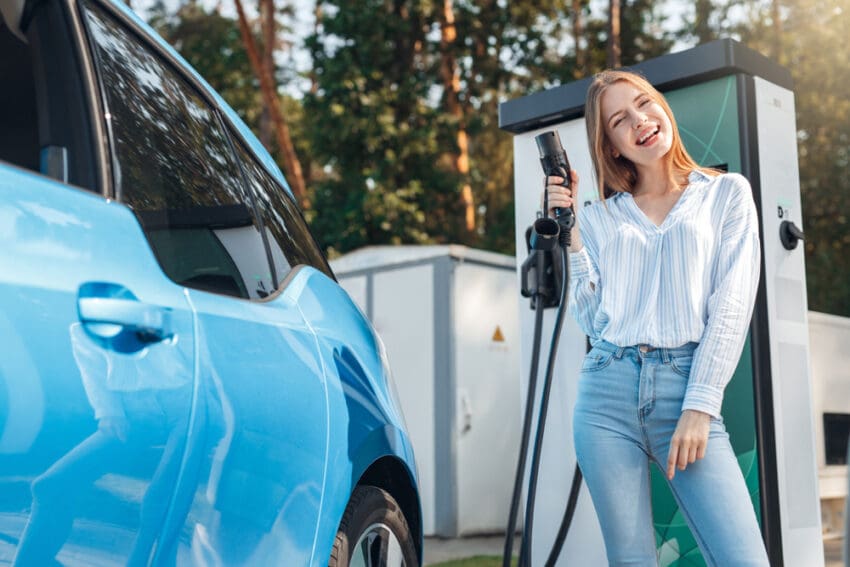Revealed: The UK’s best and worst cities for free EV charging
New data has revealed the UK cities with the best free public charging provision, as well as those where drivers will struggle to top-up for nothing.
A study by the Electric Car Scheme looked at how many free charging points there were per 10,000 people in each local authority area, as well as the areas with the highest ratio of free-to-paid-for devices.
Scotland dominated the list of free chargers per head of population, with four of the top five locations north of the border, according to the figures obtained via the ZapMap service.
Taking top spot was Kilmarnock, which has an impressive 21 free stations for its 46,350 residents — or 4.5 per every 10,000 people.
In second place was nearby Ayr, where its 20 free charging stations equate to 4.2 free chargers for every 10,000 residents. Stirling was third in the rankings with 2.2 free devices per 10,000.
UK cities with most free chargers per 10,000 people
| Rank | City | Population | No. of free charging points | No. of free charging points per 10,000 people |
| 1 | Kilmarnock | 46,350 | 21 | 4.5 |
| 2 | Ayr | 47,190 | 20 | 4.2 |
| 3 | Stirling | 36,440 | 8 | 2.2 |
| =4 | Dumfries | 33,280 | 5 | 1.5 |
| =4 | Durham | 47,785 | 7 | 1.5 |
| 5 | Paisley | 76,220 | 10 | 1.31 |
Durham was the only English location in the top five, tying with Dumfries for fourth spot. Both locations have 1.5 free places to charge an EV available for every 10,000 people. Rounding out the top five was Paisley, where there is the equivalent of 1.3 free chargers for every 10,000 people.
In contrast Southend-on-Sea, Essex has the lowest proportion of free EV charging points per population in the UK, with just one on offer for its 295,310 residents. That’s equivalent to just 0.03 per 10,000 people.
The London Borough of Bexley also has just one place to charge for free. However, its slightly smaller population (228,000) means that’s equivalent to 0.04 free chargers per 10,000, putting it second in the list of shame. In joint second place is Cardiff, with the Welsh capital offering its 447,290 residents access to just two free EV charging points.
Walsall was third with 0.06 chargers per 10,000, ahead of Burnley, Bolton and West Bromwich, all of which offer just one free public charger each, equivalent to 0.07 per 10,000 people.
UK cities with fewest free chargers per 10,000 people
| Rank | City | Population | No. of free charging points | No. of free charging points per 10,000 people |
| 1 | Southend-on-Sea | 295,310 | 1 | 0.03 |
| =2 | Bexley | 228,000 | 1 | 0.04 |
| =2 | Cardiff | 447,287 | 2 | 0.04 |
| 3 | Walsall | 172,141 | 1 | 0.06 |
| =4 | Burnley | 149,422 | 1 | 0.07 |
| =4 | Bolton | 141,331 | 1 | 0.07 |
| =4 | West Bromwich | 135,618 | 1 | 0.07 |
The study also looked at the number of free chargers relative to the total number of devices in major cities. It found that Glasgow had the highest proportion of free chargers. One in five (19.8%) of Glasgow’s 340 public chargers are free to use, according to the ZapMap figures.
Luton came a close second, with 18.3% of its chargers free to use, ahead of Worcester at 17.8%, Ipswich and Harlow (16% and 15.3% respectively). At the other end of the scale, the Royal Borough of Chelsea has a single free charger among its 752 public devices (0.13%).
While many drivers can take advantage of cheap domestic tariffs to charge cheaply at home, the cost of public charging is a worry to some people, making the availability of free chargers all the more important.
Thom Groot, CEO of The Electric Car Scheme, said: “As our study outlines, there are lots of free EV charging points available across the UK, so make sure you do your research to find the ones near you.
“Lots of bigger supermarkets offer free EV charging while you’re on their premises, so why not fit in a quick charge while you do your weekly shop? Some hotels, attractions, and restaurants also offer free or cheap charging to encourage you to visit, so if you’ve got an activity planned, check whether your destination might also allow you an affordable place to charge your car.
“The industry is developing at a rapid pace, so even if your city or town doesn’t currently have lots of free charging spots available, it doesn’t mean you won’t see these being implemented in the future.”
